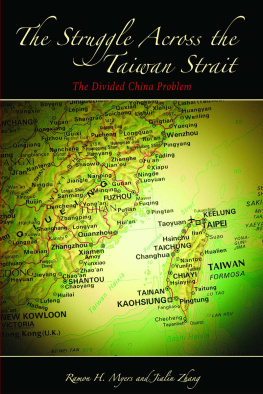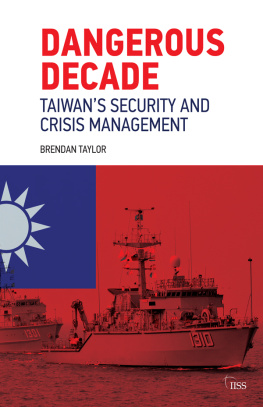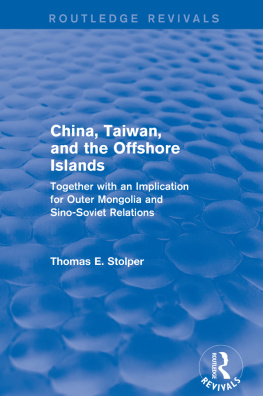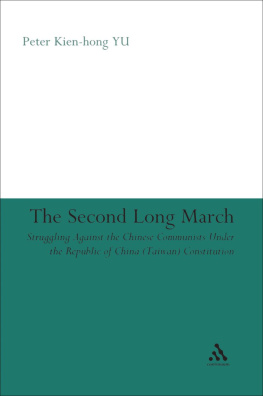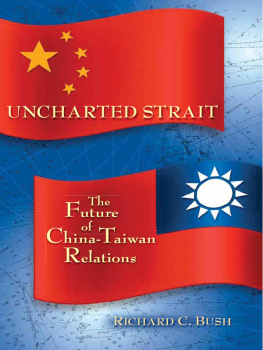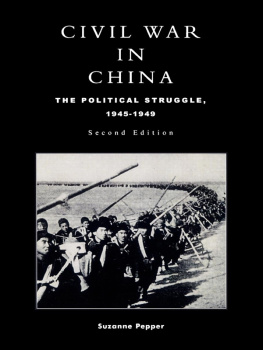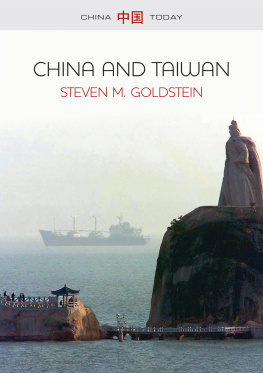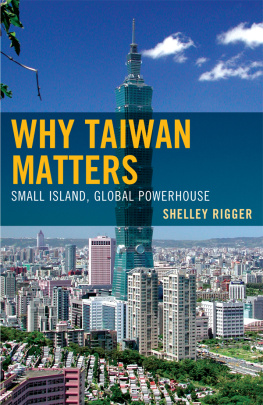The Hoover Institution on War, Revolution and Peace, founded at Stanford University in 1919 by Herbert Hoover, who went on to become the thirty-first president of the United States, is an interdisciplinary research center for advanced study on domestic and international affairs. The views expressed in its publications are entirely those of the authors and do not necessarily reflect the views of the staff, officers, or Board of Overseers of the Hoover Institution.
www.hoover.org
Hoover Institution Press Publication No. 542
Copyright 2006 by the Board of Trustees of the Leland Stanford Junior University
All rights reserved. No part of this publication may be reproduced, stored in a retrieval system, or transmitted in any form or by any means, electronic, mechanical, photocopying, recording, or otherwise, without written permission of the publisher.
First printing, 2006
13 12 11 10 09 08 07 06 9 8 7 6 5 4 3 2 1
Manufactured in the United States of America
The paper used in this publication meets the minimum requirements of the American National Standard for Information SciencesPermanence of Paper for Printed Library Materials, ANSI Z39.48-1992.

Library of Congress Cataloging-in-Publication Data
Myers, Ramon Hawley, 1929
The struggle across the Taiwan strait : the divided China problem / by Ramon H. Myers and Jialin Zhang
p. cm. (Hoover Institution Press publication, 542)
ISBN 0-8179-4692-6 (alk. paper)
1. TaiwanRelationsChina. 2. ChinaRelationsTaiwan. 3. Chinese reunification question, 1949 I. Title: Divided mainland ChinaTaiwan problem. II. Zhang, Jialin, 1933 III. Title. IV. Series.
DS799.63.C6M94 2006
327.5105124909dc22
2005027995
In memory of Wang Daohan, chairman of the Association for Relations across the Taiwan Strait, and Koo Chen-fu, chairman of the Strait Exchange Foundation, for their great efforts toward peacefully resolving the divided China problem.
Introduction
This short, concise history aims to inform readers on how China divided, in 1949, into two regimes that have struggled ever since to achieve political goals that have become increasingly incompatible.
The protagonists of this continuing struggle are as follows. The regime we denote as the mainland China authorities has controlled the territories of the Peoples Republic of China from October 1, 1949, to the present, and its leaders have always insisted that Taiwan and its offshore island must eventually be unified with their regime, by war if need be, but preferably by peaceful means.
The regime we call the Taiwan or Republic of China authorities has controlled Taiwan, the Pescadores, and certain offshore islands ever since the Nationalist Government reclaimed those territories from Japan on October 25, 1945.
Our narrative describes how, for more than a half century, these competing authorities struggled to unify China, until a political earthquake shook Taiwan on March 18, 2000. Taiwans people had elected a new political regime, which then began changing the political rules by which the former Guomindang (GMD, or Chinese National Peoples Party) regime had struggled with the mainland regime to unify China. In essence, this newly elected Taiwan regime championed a new belief system that not only intensified the struggle with the mainland Chinese authorities but locked both sides into a new contest that increased the probability of war rather than peace.
We refer to the one China principle, Taiwan is a part of China, etc., as terms conveying the sentiments and beliefs expressed in these competing political regimes. Our story becomes complex after the March 18, 2000, election when Taiwans society became more divided between groups supporting independence from China, groups supporting unification of China, and groups wanting no change from the status quo. Taiwans political parties have also advanced different arguments as to how Taiwan should evolve. Never have the islands people been so divided about their future and priorities. So far, the groups in this debate lack the evidence needed to be persuasive. As the English philosopher Bertrand Russell once put it, The most savage controversies are those about matters as to which there is no good evidence either way.
This new struggle within Taiwan and between Taiwan and mainland China is now influenced by a new belief system we call Taiwan nationalism. This term denotes a shared ideology of strong identification with the territory of Taiwan, a shared history of social and political change in which Taiwan was controlled by different agents from outside, and shared symbols signifying the primacy of Taiwans distinctive culture. The ideology of Taiwan nationalism also includes the claim that Taiwan is separate from China and already is a sovereign, democratic nation. As for those believing in Taiwan nationalism, if they also believe Taiwan should be politically separate (independent) from China, we refer to them as Taiwan nationalists and separatists.
Some in the Democratic Progressive Party (DPP) embrace the belief system of Taiwan nationalism and separatism, but many in both the DPP and GMD-led coalitions simply advocate the ideology of Taiwan nationalism because they only want to reform the political system and differentiate Taiwan as democratic and sovereign. While still advocating Taiwans political status quo, they also want to engage the mainland China regime. If conditions were to improve in cross strait relations, more might consider forming a China Commonwealth or China Federation in which Taiwan would still be a sovereign nation, yet part of China.
The mainland Chinese authorities strongly oppose those groups supportive of Taiwan nationalism and separatism, and have threatened to use force to prevent Taiwan from leaving the orbit of China.
These clashing beliefs take place within the Asia-Pacific region, a region of enormous wealth, high population density, and rapid change. As tensions across the Taiwan Strait worsened after 2000, discussions about possible war between the two sides became more frequent. Such a conflict would likely spread, disrupt the regions prosperity, and possibly produce long term chaos. Taiwans democracy still offers the people the hope that the leaders of these two regimes will realize that using force, rather than reason and restraint, is too high a price for ending the Chinese civil war begun more than a half century ago.
1. China Divides into Two Rival Regimes
In autumn 1945, communist forces moved into Manchuria and obtained superior weapons from the Soviets, who had been there since August. The Chinese Communist Party (CCP) troops occupied vast parts of the countryside by imposing land reform and establishing their village and township governance. By using Maos strategy of encircling the cities and isolating them from the countryside, CCP troops, now in possession of better military equipment, soon defeated the American-trained Nationalist forces and advanced southward into North China.1 By January 31, 1949, Communist troops had occupied Beijing, and on October 1, 1949, Chairman Mao stood at Tiananmen to proclaim the founding of a new Chinese state, the Peoples Republic of China.2

